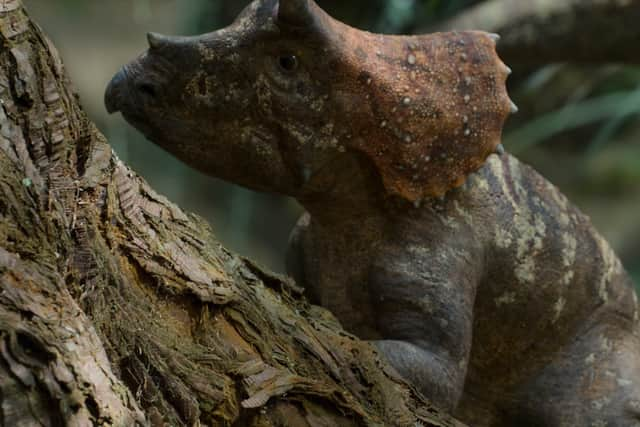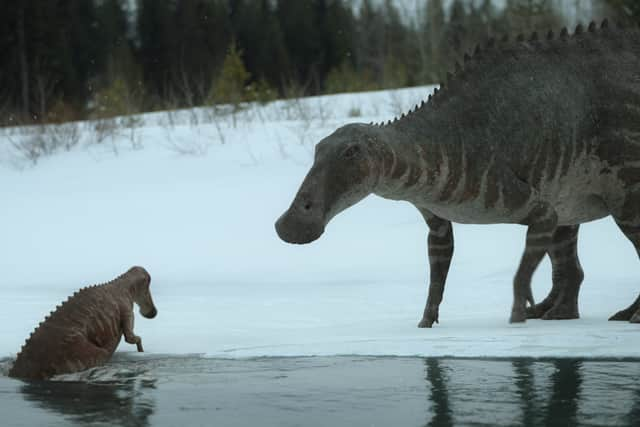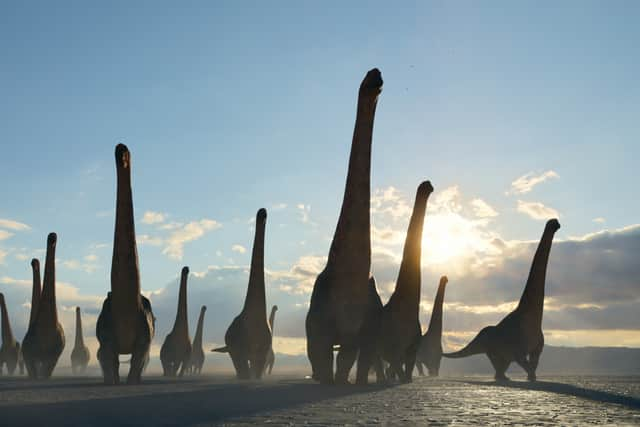Jon Favreau on Prehistoric Planet: ‘We could have never shown feathered dinosaurs like this 20 years ago’
and live on Freeview channel 276
Prehistoric Planet takes viewers back 66 million years to when dinosaurs roamed the Earth.
With cutting edge animation technology, the series brings the dinosaurs to life, and shows how they would have interacted with their habitat.
Advertisement
Hide AdAdvertisement
Hide AdJon Favreau, who worked as executive producer on The Mandalorian and several Marvel projects including all four Avengers films, moved from the world of science fiction to science fact with this latest series.
What is Prehistoric Planet about?


Prehistoric Planet has been described as Planet Earth 66 million years ago - and the programme follows the same format as the previous Attenborough project. Each episode looks at a different habitat, from coasts, to deserts, to frozen forests, and imagines how different species of dinosaur would have fought to survive.
David Attenborough narrates the actions of the dinosaurs in each episode, which is based on the latest scientific understanding of each creatures behaviours.
Whilst the dinosaurs are animated, the series is shot like other nature documentaries from a hidden camera perspective as if the dinosaurs really are being observed. At a behind the scenes press tour, executive producer, Jon Favreau, said: “We’ve only been on the planet for well shy of a million years, but dinosaurs have been around for 100 million years in just this period.
Advertisement
Hide AdAdvertisement
Hide AdContinents moved and shifted as dinosaurs existed on this planet. There’s so many different areas to explore here.”
How were the dinosaurs created in Prehistoric Planet?


The series used hyper-realistic computer imaging to render images of dinosaurs that are more realistic than anything seen on TV or film previously.
Favreau, said: “We could have never shown feathered animals like this 15 or 20 years ago.
“Jurassic Park, the first and for my money one of the best utilisations of CGI, they were dealing with scales and skin, and that took everything they had from a processing perspective.
Advertisement
Hide AdAdvertisement
Hide Ad“Well now we can do fur, we can do feathers - there’s so much more that’s available to us from a feasibility standpoint that really the research and our imaginations are the only limitations.”
He added: “I don’t think it’s a coincidence that every time there’s a new technology everybody wants to show dinosaurs.
“The first time they did stop-motion, the first time they did CGI. This has been a fascination with storytellers and humanity since the original discovery of dinosaurs.”


Deinocheirus is one of the feathered dinosaurs to be featured on Prehistoric Planet, and is shown struggling with flies infesting its coat.The massive creature is shown scratching itself with its massive claws before rubbing itself against a tree trunk to relieve the itch.
Advertisement
Hide AdAdvertisement
Hide AdAs well as using advanced CGI technology, the series also relied on the knowledge of prehistoric experts to ensure the design of the dinosaurs was prehistorically accurate.
Dr Darren Naish, a palaeontologist who worked alongside producers on the series, said: “This is the first time a TV series or a movie involving prehistoric life has had a full time live-in technically qualified palaeontologist.
“It was important to have that involvement and as a consequence you’re seeing as best as possible a cutting edge portrayal of our scientific understanding of these animals.”
Favreau said that none of the animation was “done for flash” and that all of the animation choices were “set in the science”.
Prehistoric Planet begins on Apple TV+ on Monday 23 May, with a new episode released each day through to Friday 27 May. You can read NationalWorld’s review of the series here.
Comment Guidelines
National World encourages reader discussion on our stories. User feedback, insights and back-and-forth exchanges add a rich layer of context to reporting. Please review our Community Guidelines before commenting.
